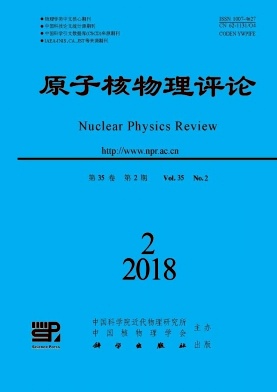|
[1]
|
ALFORD M, RAJAGOPAL K, WILCZEK F. Phys Lett B, 1998, 422(1-4):247. |
|
[2]
|
SHIFMAN M. At The Frontier of Particle Physics:Handbook of QCD[M]. Sinapore:World Scientific, 2001. |
|
[3]
|
IWASAKI M, IWADO T. Phys Lett B, 1995, 350(2):163. |
|
[4]
|
RAPP R, SCH T, AUML, SHURYAK E, et al. Phys Rev Lett, 1997, 81:53. |
|
[5]
|
ALFORD M, SCHMITT A, RAJAGOPAL K, et al. Rev Mod Phys, 2008, 80:1455. |
|
[6]
|
FUKUSHIMA K, HATSUDA T. Rept Prog Phys, 2010, 74(1):14001. |
|
[7]
|
RAJAGOPAL K, WILCZEK F. At The Frontier of Particle Physics[M]. Sinapore:World Scentific, 2001 |
|
[8]
|
GIANNAKIS I, REN H C. Nucl Phys B, 2003, 669(3):462. |
|
[9]
|
MERMIN N D. Rev Mod Phys, 1979, 51(3):591. |
|
[10]
|
VOLOVIK G E. The Universe in a Helium Droplet[M]. Oxford:Oxford University Press, 2009. |
|
[11]
|
RAMAN C, ONOFRIO R, VOGELS J M, et al. J Low Temp Phys, 2001, 122(1-2):99. |
|
[12]
|
ZWIERLEIN M W, ABO-SHAEER J R, SCHIROTZEK A, et al. Nature, 2005, 435(7045):1047. |
|
[13]
|
PANG L G, PETERSEN H, WANG Q, et al. Phys Rev Lett, 2016, 117(19):192301. |
|
[14]
|
MINORU E, YUJI H, MUNETO N, et al. Prog Theor Exp Phys, 2014, 2014(1):165. |
|
[15]
|
LIFSHITZ E M, PITAEVSKⅡ L P. Course of Theoretical Physics:Satistical Physics:Theory of the Condensed State[M]. Sinapore:World Scientific, 1997. |
|
[16]
|
GIANNAKIS I, REN H C. Phys Rev D, 2002, 65:0504017. |
|
[17]
|
BALACHANDRAN A P, DIGAL S, MATSUURA T. Phys Rev D, 2012, 73:074009. |
|
[18]
|
EIJI N, MUNETO N, TAEKO M. Phys Rev D, 2007, 78:045002. |
|
[19]
|
ETO M, NITTA M. Phys Rev D, 2009, 80:125007. |
|
[20]
|
IBRAHIM A I, MARKWARDT C B, SWANK J H, et al. Astrophys J, 2004, 609(1):L21. |
|
[21]
|
KULKARNI S R, FRAIL D A, KASSIM N E, et al. Nature, 1994, 368(6467):129. |
|
[22]
|
MURAKAMI T, TANAKA Y, KULKARNI S R, et al. Nature,1994, 368(6467):127. |
|
[23]
|
LAI D, RASIO F, SHAPIRO S. Astrophys J, 1994423(1):344. |
|
[24]
|
BOCQUET M, BONAZZOLA S, GOURGOULHON E, et al. Astrophys, 1995301(3):757. |
|
[25]
|
ZHANG X B, BU Z C, PENG F P, et al. Nucl Phys A, 2015, 938:1. |
|
[26]
|
ANDERSSON N, COMER G L, GROSART K. MNRAS, 2004, 355(3):918. |
|
[27]
|
SEDRAKIAN D M, BLASCHKE D, SHAHABASYAN K M, et al. Astrophys, 2008, 51:544. |
|
[28]
|
BEDAQUE P F, BERKOWITZ E, CHERMAN A. Phys Rev D, 2011, 84:023006. |
|
[29]
|
FERRER E J, INCERA V L. Phys Rev D, 2007, 76:045011. |
|
[30]
|
FERRER E J, INCERA V L. Phys Rev Lett, 2006, 97:122301. |
|
[31]
|
ABRIKOSOV A A. Sov Phys JETP, 1957, 5:1174. |






 甘公网安备 62010202000723号
甘公网安备 62010202000723号 DownLoad:
DownLoad: